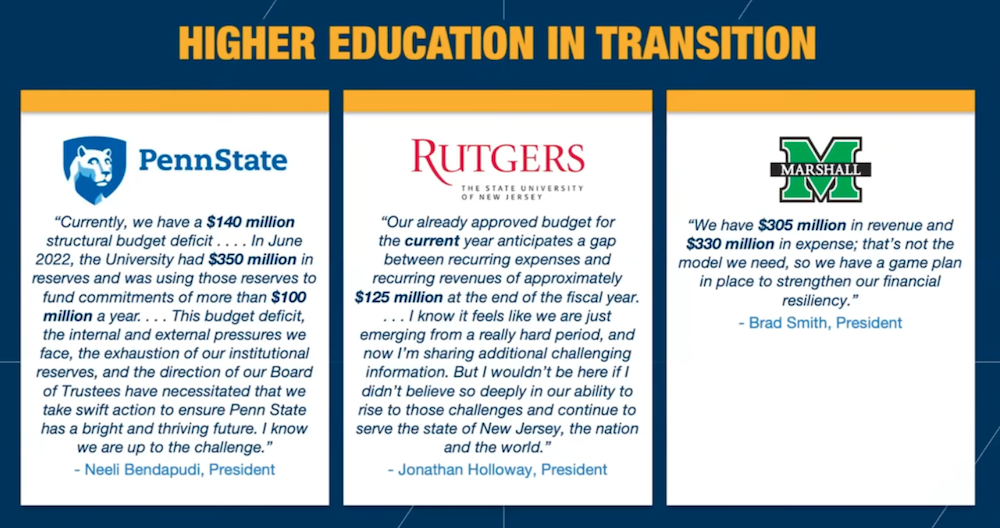University’s projected enrollment decline of 5,000 over the next decade could require a $75 million adjustment to annual budget
By Don Smith, WV Press Association
Editor’s note: This is the second in a series of articles from a WV Press Association interview with WVU President Gordon Gee on the State of West Virginia University. See article one here
MORGANTOWN, W.Va. — West Virginia University’s President Gordon Gee and his administration have a vision of the future:
WVU will be a small institution with fewer employees and fewer programs.
The reduction is a reality and has started; however, the details of the plan — the final who, what and where — have not been determined, or at least shared.
Only the “why” is clear: a decline in student enrollment and the related revenue loss.
Vice President for Strategic Initiatives Rob Alsop, who gave the budget update following President Gee’s recent announcement of a $35 million budget deficit, said it wasn’t the administration’s predetermined goal to make WVU a smaller university and that the decisions being made are based on projects of declining enrollment and revenue over the next decade.
“We take no joy about planning to be a smaller institution with fewer employees and fewer programs, but it is something we need to do,” Alsop said during his budget update.
“Our model shows … that WVU needs to adjust our margin by at least $75 million over the next five to seven years … if we see the potential enrollment decline of 5,000 over the next decade.”
The administration is focused on those projections, knowing WVU has already experienced a 5,000-student drop in enrollment: The university had more than 31,000 students in 2014. This year, that enrollment number is down to just over 26,000.
Gee said WVU must face reality and make tough decisions.
“We have to always be realistic about where we are … When there are fewer number of students, you have to deal with that reality,” Gee said, explaining the administration is developing a plan to allow the university to better serve a smaller student population.
“We know fundamentally we’ll have fewer programs and fewer people, but we will have a stronger institution. That is the issue,” Gee said.
Details of WVU’s “Management Improvement Plan” — a $35 million reduction in expenses for 2024 — have not been released.
In terms of 2023, Alsop said, “We are leveraging some one-time monies to fill our budget gap that are not available on a sustainable and ongoing basis for FY ’24 and beyond. We think, best case … we will deploy about $19 million of our cash reserves in fiscal year 2023. … If we do nothing for fiscal year 2024 to reduce our expenses, we are looking at a loss somewhere around $30 million in cash for next year, and we do not have the reserves to burn through that amount of money in cash.”
WVU had already put a spending freeze in place. This month, it announced the University’s Information Technology Services and Health Sciences Information Technology Services would merge by July 1. Additionally, university employees were told they could no longer purchase copiers, printers, and related supplies independent of WVU’s managed print program.
There has been no indication when the entire management plan will be released.
“We still are working through many aspects of our modeling and projections; however, we are committed to engaging with our campus community throughout the process and sill share more in the coming weeks regarding Fiscal Year 2024, Alsop said. “Fiscal year 2024 will be a transitional year. We can’t snap our fingers and reduce $35 million of expenditures overnight.”
While changes, personnel cuts and job losses aren’t clear, Alsop said changes would be strategic, and not just across the board cuts with each department asked to make the same cuts.
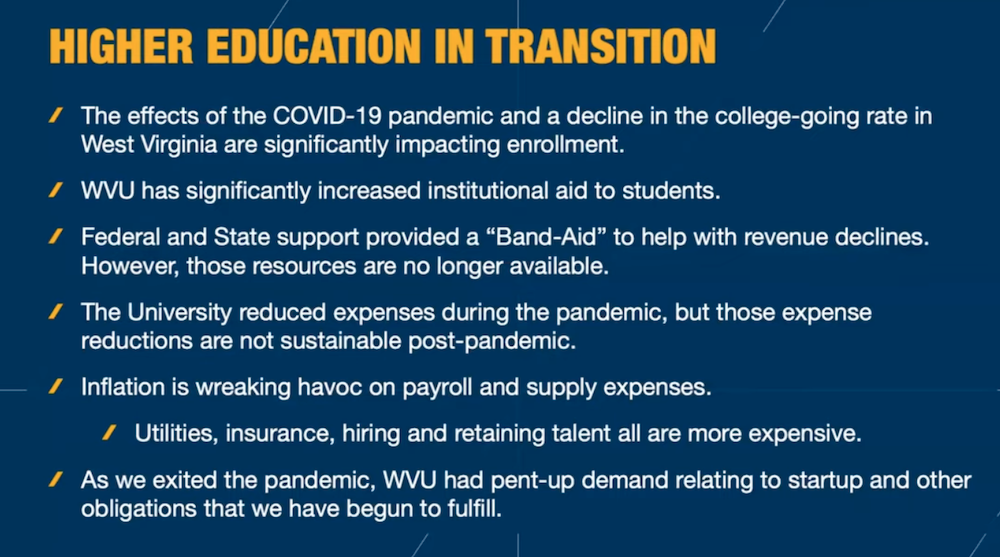

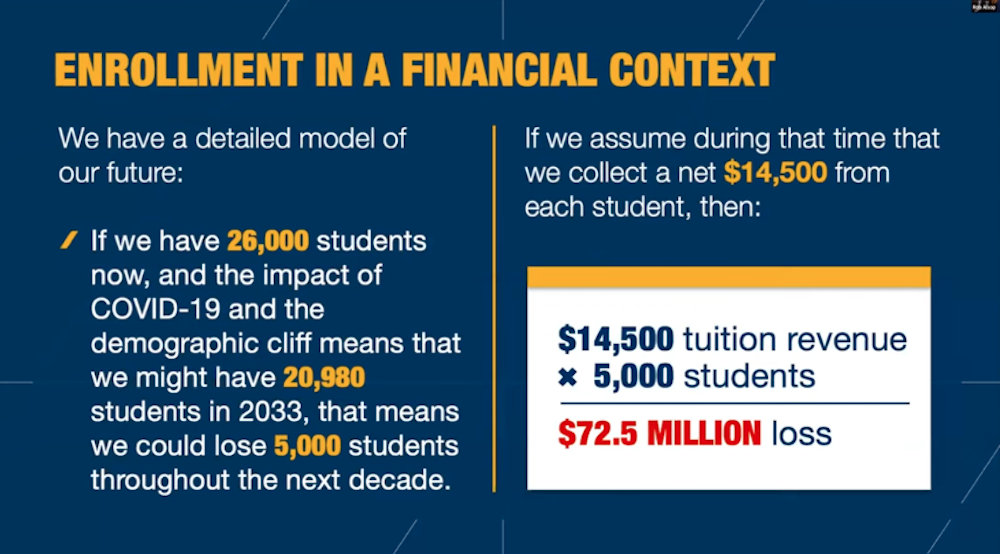
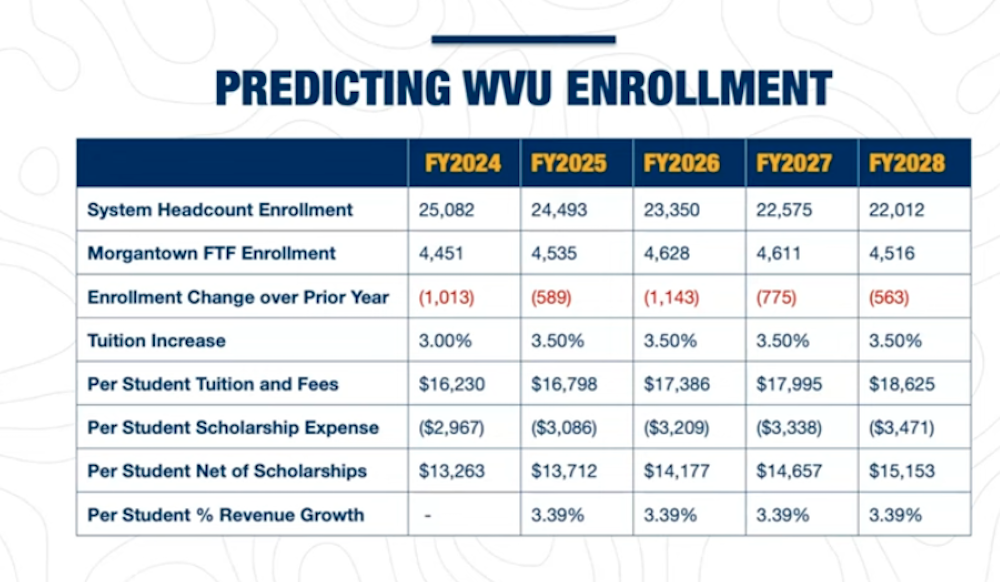
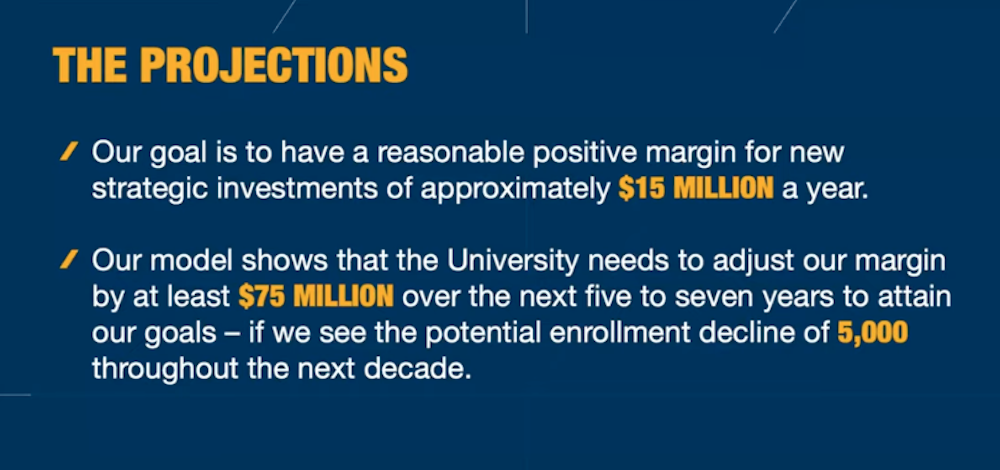
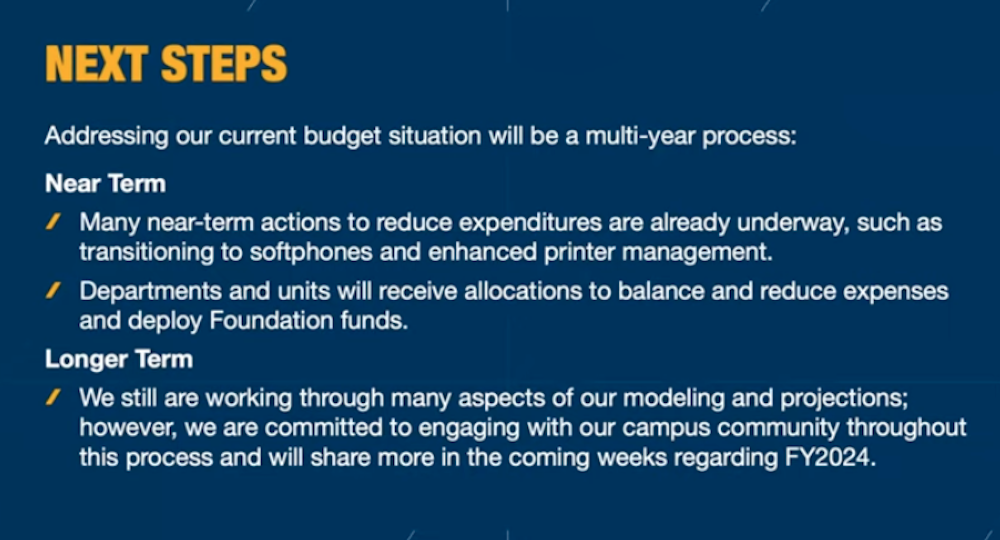
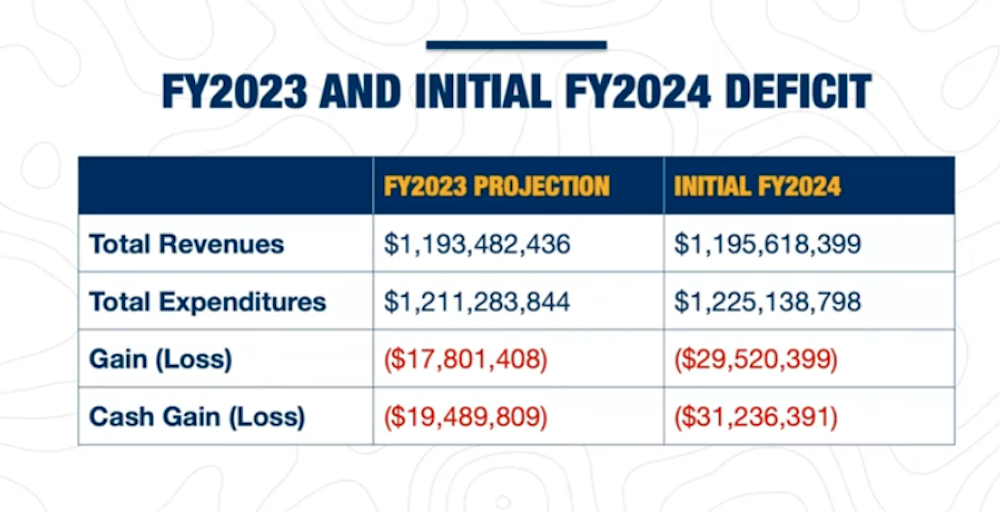
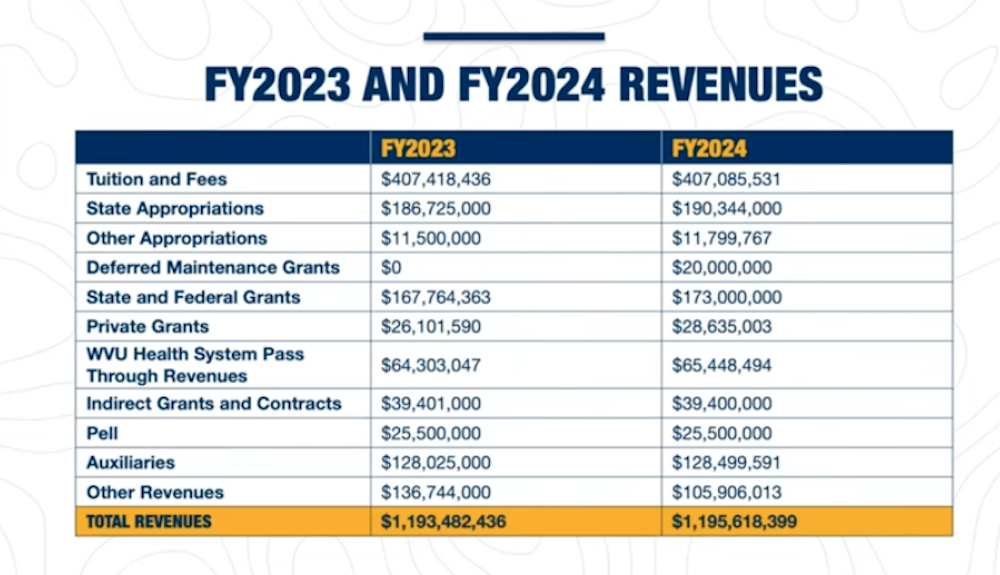
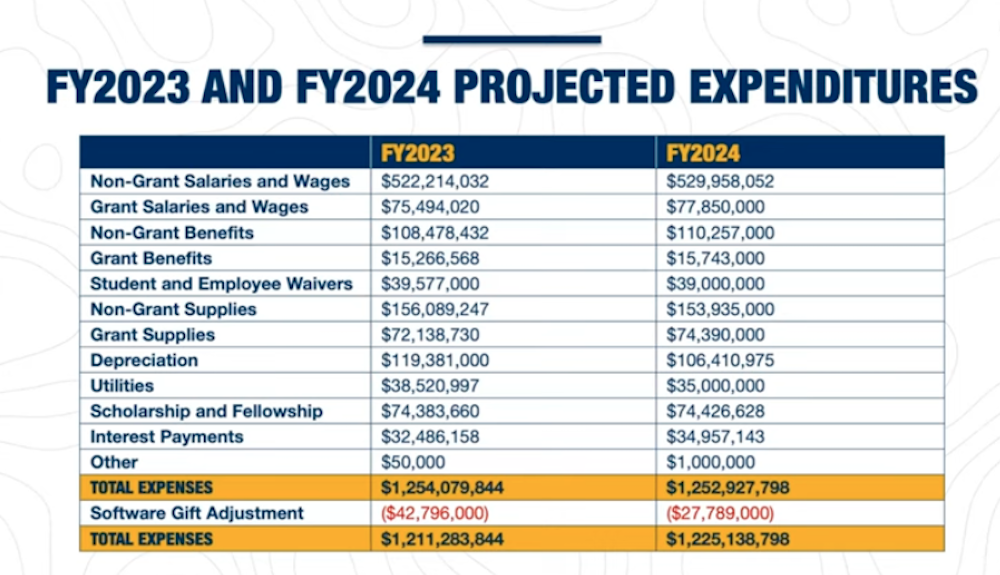
Alsop made it clear that WVU needs to address more than just the budget deficit.
“We need to generate monies to make strategic investments in our people so that our faculty have great pathways, and we appropriately resource our programs moving forward. Our goal is not only to have a balanced budget where, if one thing goes wrong, we’re talking about cutting or not able to invest, but we want to have the ability to consistently make new strategic investments of around $15 million a year, investing in our people and our programs to keep WVU vibrant. … If we starve every program with across-the board cuts and no investments, we will be doing a disservice to this institution.”
Speaking with WV Press, Gee said recognizing program, faculty and staff value to the university is a key in securing WVU’s future.
“There is always a balance. Being an institution that supports multiple roads for making sure that people are successful …is exactly what we are about. I think that we need to reward our faculty differently. I believe those who teach and teach well should be rewarded accordingly.”
Gee said a structured approach of recognizing and rewarding faculty might not be the best system. “We want each of you, as an individual, to be recognized for all the wonderful things you are doing and the value you bring to the university.”
Gee said WVU has a chance to be a university that finally values its faculty for “what you are, not simple what you do in some sort of structured approach that has existed.”
In terms of declining enrollment and financial challenges, both Gee and Alsop pointed out that all universities are facing the same issues. Several universities have announced similar enrollment and financial situations.
Earlier this month, Penn State University President Neeli Bendapudi shared a memo with college and campus leaders detailing Penn State’s current financial situation and the challenges facing units across the University as it works through the difficult fiscal environment.
Bendapudi said Penn State currently has a $140 million structural budget deficit within its $3 billion Education and General (E&G) Funds budget.
